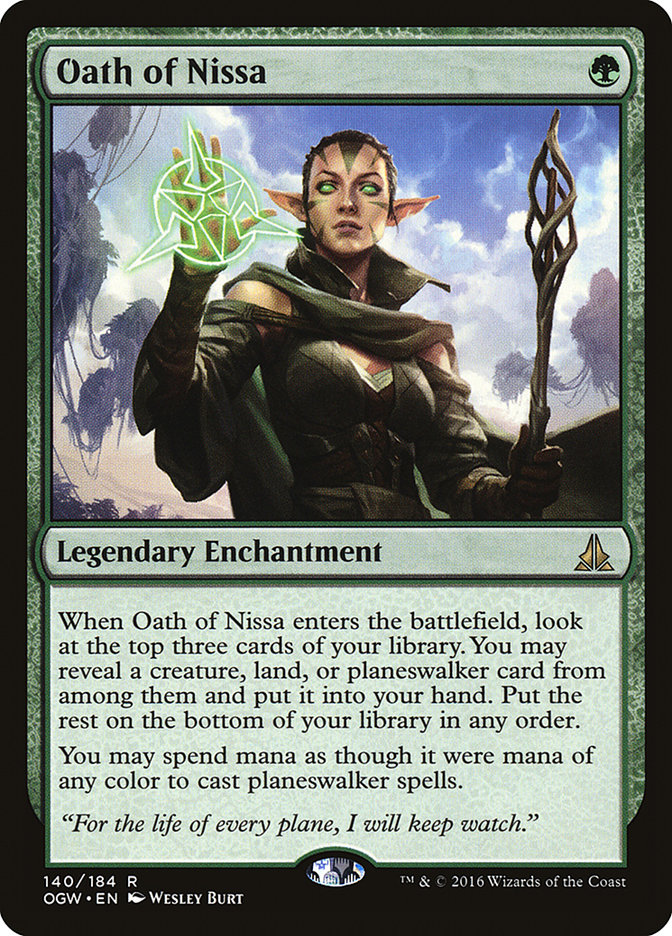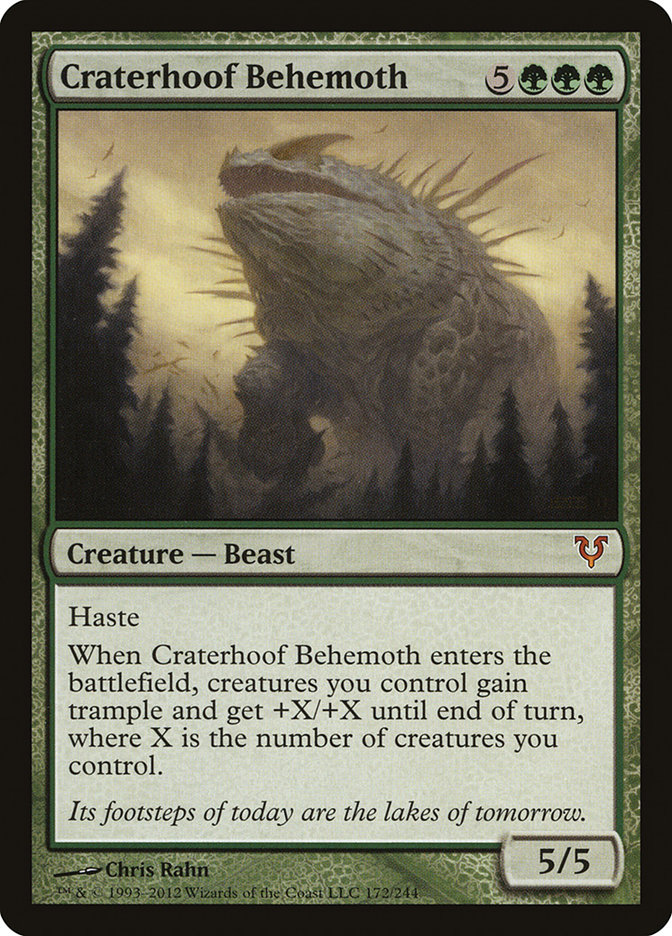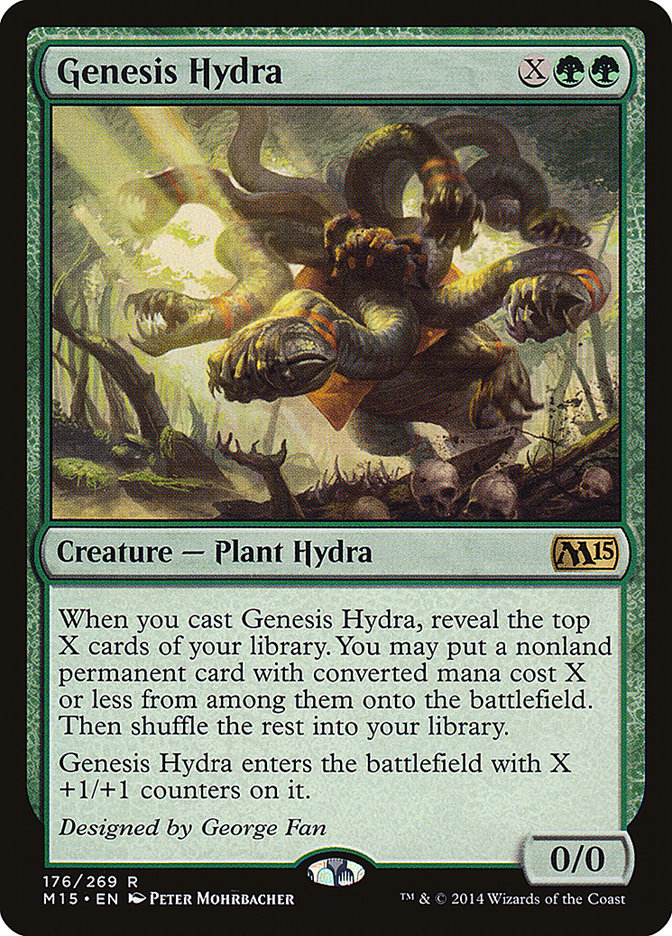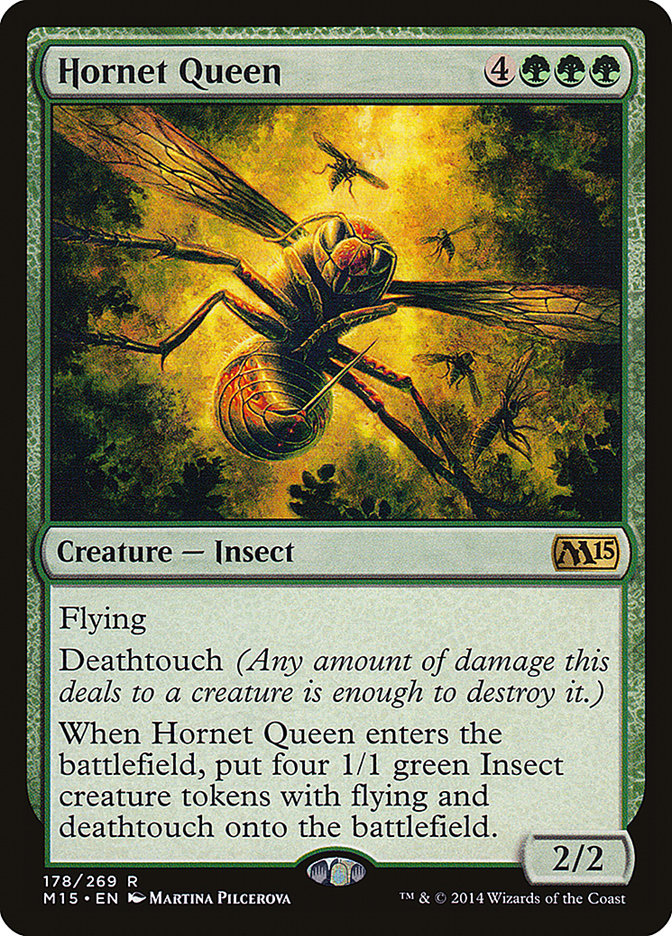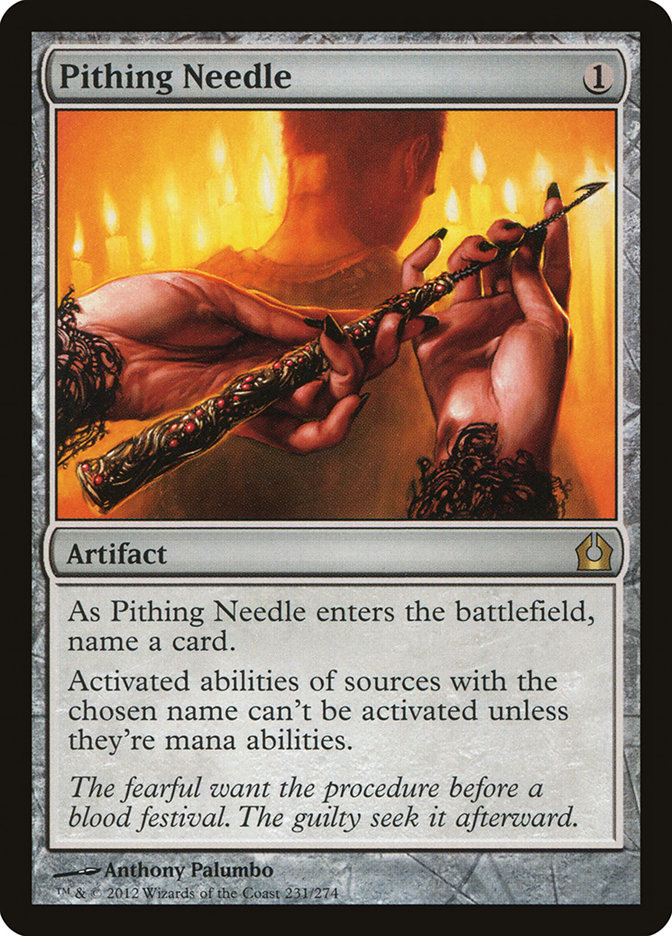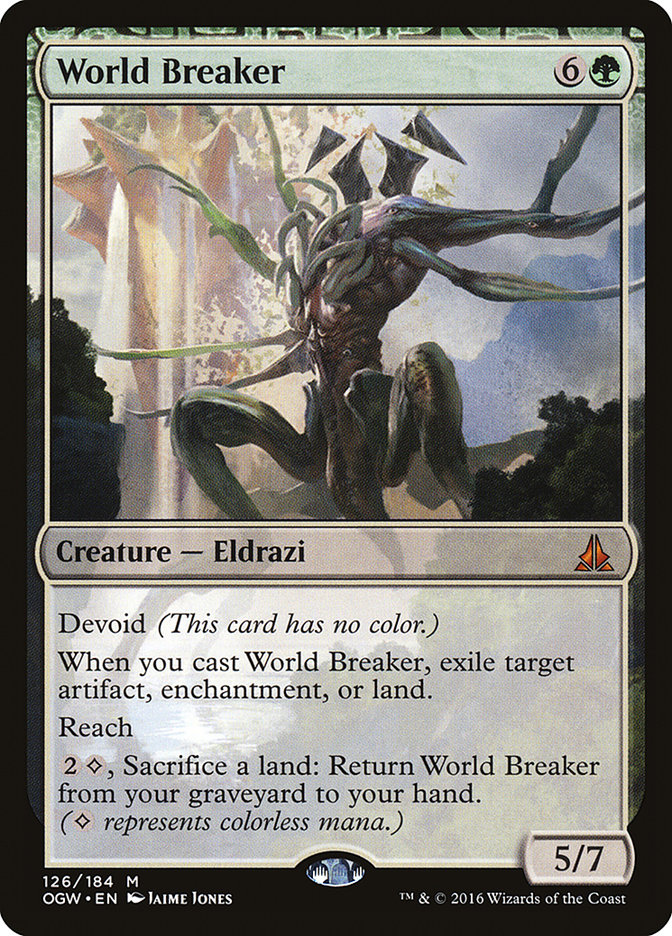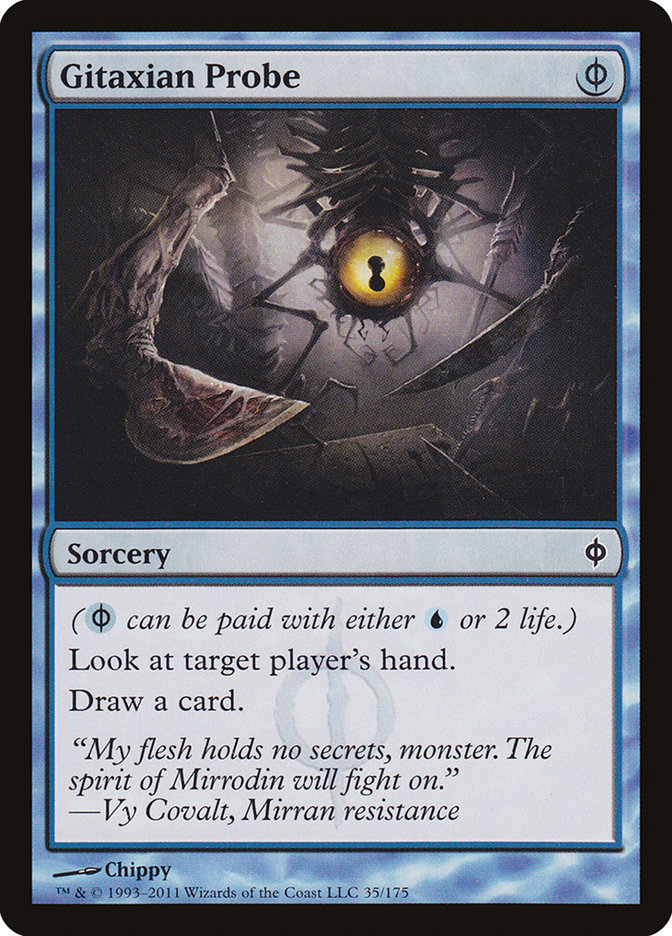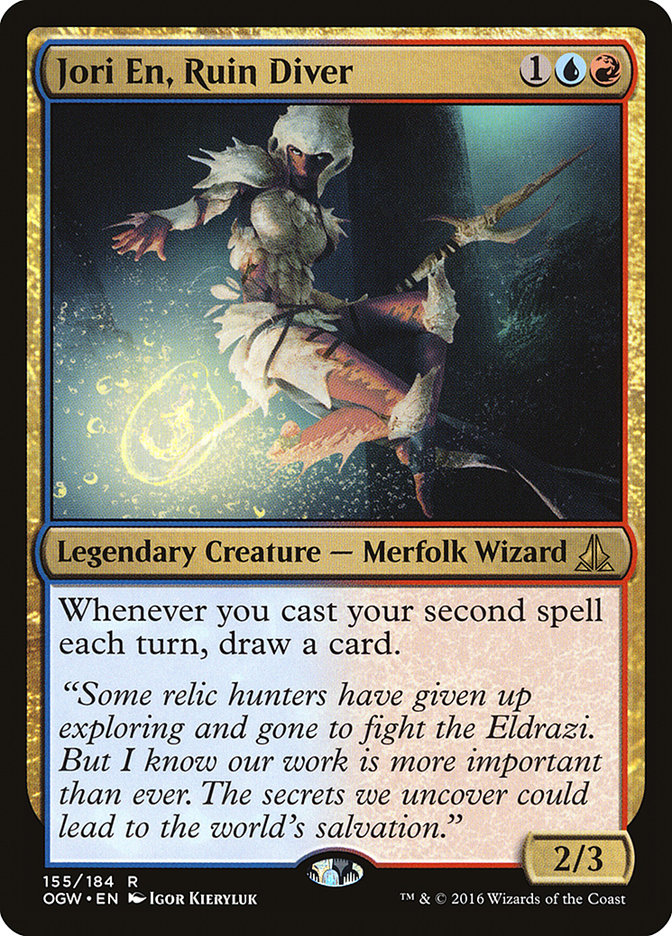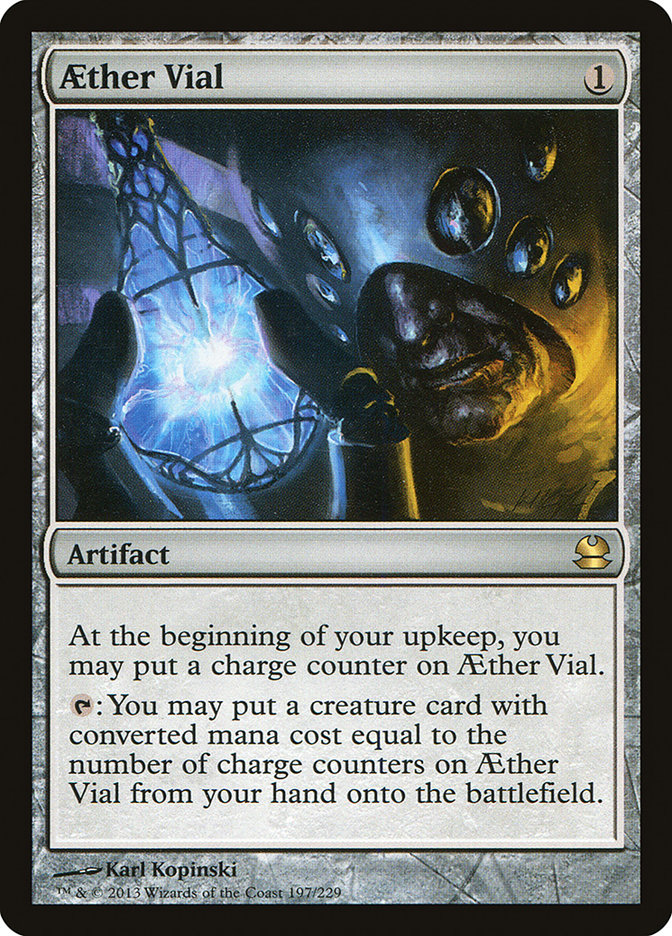As I write this, I’m on a plane to Atlanta and typing on my phone. I’ve decided my deck for the Pro Tour, and I’m comfortable with the Draft format. I checked a suitcase with almost all of my Modern cards in case I change my mind at the last minute or anyone needs to borrow anything.
The Pro Tour will just be starting soon after this article goes up, so I can’t go into details about what my teammates and I are playing, but I can share some thoughts on Modern format.
I think the bans opened the format up a lot more than we’ll see at #PTOGW. There are so many decks in Modern that it’s really hard to properly test an idea, and the established decks are so good, it takes a tremendous amount of confidence to play something new. Realistically, you only have time to try a couple of new ideas after the banning announcement goes up, and if you’re testing on Magic Online, using new cards, and trying to practice drafting in Magic Online, you have an absurdly small amount of time to try things.
The bannings will shake things up enough that we’ll see new decks, but most innovation, like Todd Anderson’s Temur Delver deck, will be rooted in the past, mostly people looking to blue decks that have been successful before to find the right new home for their Snapcaster Mages.
The primary shot that I took in testing this time was working on Green Devotion. I think Oath of Nissa revolutionizes that deck, and I like the build I had a lot. Game 1 is horrible against G/R Tron and Infect, which is why I had to table it until after the Pro Tour, but I think there might be something there. It’s kind of like Eldrazi; it ramps in a way that’s resistant to counterspells and removal, so it crushes fair midrange decks, but it plays to the board in a way that plays right into G/R Tron’s sweepers, and it does a slower thing than Infect in a way that doesn’t really interact. If people switch to G/B Infect, Green Devotion gets a lot better, but I can’t be confident at this point that that will happen.
Here’s where I left off with my list:
Creatures (20)
- 2 Eternal Witness
- 1 Acidic Slime
- 4 Arbor Elf
- 1 Hornet Queen
- 1 Craterhoof Behemoth
- 4 Courser of Kruphix
- 3 Eidolon of Blossoms
- 4 Genesis Hydra
Planeswalkers (4)
Lands (22)
Spells (14)

I really like what I’m doing with the ramp. Eidolon of Blossoms works really well with the enchantment based ramp, which works overtime with Arbor Elf and Garruk Wildspeaker. All the threats generate card advantage, so it’s really hard to keep up with if you’re playing answers. It’s basically just mana and card draw, and outside of that the only high-impact cards to hit with Genesis Hydra are Craterhoof Behemoth and Hornet Queen, but the deck goes big enough that you can find one of them pretty quickly. Genesis Hydra for one to put a revealed one=mana card on top of your library onto the battlefield and build devotion is a common play.
Oath of Nissa is great, but it would be a lot better if I could play four Sylvan Caryatid or Sakura-Tribe Elder so that I could more reliably keep hands that had Oath of Nissa and no acceleration. It’s really bad for this deck when it doesn’t ramp on the first two turns, and using enchantments to ramp means it’s the one thing Oath of Nissa can’t find. It’s possible that I should just be playing one or two of those in addition to all the enchantment ramp, just to be more sure to have it, but I worry a little about getting threat-light.
The sideboard tries to make up for the big holes. Crumble to Dust slows G/R Tron down enough that you should usually win when you cast it; Creeping Corrosion and Firespout combine with Hornet Queen to give you a comfortable Affinity matchup; Spellskite and Melira, Sylvok Outcast at least make it look like you’re trying against Infect; and the lifegain cards that come in against Burn do double duty against Jund-style decks, joining Eternal Witness to offer more cheap, reliable card advantage that buys extra time against their aggressive starts.
The primary other cards I’d be interested in are Pithing Needle, Lightning Bolt, and World Breaker.
World Breaker offers a resilient threat, since you have Nykthos to generate colorless mana to buy it back. It works like an Acidic Slime, except that it can kill Etched Champion and then block anything in Affinity, so I think it’s great there.
Lightning Bolt and Firespout attack the same problem in very different ways, and I’m not sure which is best. I leaned on the side of high-impact, because that’s generally what you want in the sideboard, but it’s possible this deck has enough to do with three mana and you really just want a cheap card to buy some time.
Pithing Needle is primarily another way to fight G/R Tron that has play in other places, but I don’t like needing to guess what they have in advance, naming Oblivion Stone, and then just losing to Ugin, the Spirit Dragon. Better, I think, to just not let them cast those things.
The other new direction I put the most thought into, but just didn’t have time to really work out, was Jori En, Ruin Diver. I think this card is great, but it’s really tricky to find a home for. The challenge is that it wants to be in an attrition strategy, rather than an aggressive strategy, so that it has time to really pay you for building around it, but that it most wants to play with Gitaxian Probe.
Gitaxian Probe is a really fascinating card. It often feels like it should be easy to put into a deck and that it’ll just make the deck better, but it has real costs. It basically has to take the place of a spell, because you can’t really afford to think of it as a land when you’re making mulligan decisions, but if you fill your deck with air like this, Serum Visions, and Thought Scour, aka the cards Jori En most likes, you’re likely to just flood out in the long term.
Moreover, the life cost is real, which I think makes it hard to play in solid three-color decks that are already using their life totals as a resource to make their mana work.
So Jori En, Ruin Diver is best in a straight U/R deck where you can get away with playing lots of one-mana cantrips. The good news is, there are tons of other creatures that want the same thing: Monastery Swiftspear; Delver of Secrets; Snapcaster Mage; Jace, Vryn’s Prodigy; and Young Pyromancer among other slightly less popular options.
The problem is that once you play a few of these creatures and a lot of cantrips, you have very little space for interactive cards, so you play Lightning Bolt, maybe some Vapor Snags, and some counterspells. The problem is that this only interacts along a certain axis, and filling your deck with cheap spells means it can be hard to win a long game where you’re not maximizing the tempo they’ve offered you. Basically, I think you’re best served by just trying to kill them, once you’re confined to U/R, and I don’t think Jori is the best way to do that.
I think a more natural fit is the counterless Grixis Control deck Corey Burkhart played in the Top 8 of Grand Prix Pittsburgh.
Creatures (11)
Planeswalkers (1)
Lands (23)
Spells (25)

I don’t think you can get away with playing more than one or two Gitaxian Probes here, and zero might be right, but discard helps protect Jori, and you have Kolaghan’s Command to get it back once the opponent’s removal is exhausted.
The problem here is that I just couldn’t get that deck to a point I was happy with. I think it kind of existed to prey on Splinter Twin, and it plays less well against G/R Tron and Eldrazi–basically, it has the same problem as straight U/R–and while it’s better at going long, and has a more diverse range of modes of interaction available, I’m still just not comfortable playing a reactive deck that necessarily has narrow answers in an unresolved field as large and diverse as Modern after bannings.
One innovation that I found that I liked in that kind of deck was just playing Stone Rain or Molten Rain in the maindeck. It’s best against Tron, but if you stick a Jace, Vryn’s Prodigy on turn 2 and cast Molten Rain on turn 3, Jace will usually let you cast it again on turn 4, and then by the time you find the next Molten Rain, you should be ready to flash it back too, and getting this many lands blown up is a problem for a lot of decks. Basically, it’s like Fulminator Mage + Kolaghan’s Command, but faster and you have more ways to do it.
The other approach I took is trying Jori En in the shell of Shouta Yasooka’s Eternal Command deck. This deck got pushed out of the format by Scavenging Ooze decks, but it’s possible that those will be minimized by the strength of G/R Tron and Eldrazi, so I thought there might be an opening here. It’s not a perfect fit, as the spells are more expensive than Jori En would like, and Jori doesn’t really like it when you deploy things with Aether Vial, but it’s a deck that’s definitely trying to play the right kind of game, and it’s already playing creatures, so it’s not a bad fit.
Here, again, the problem was that while Jori might be a step in the right direction for this deck, it still just fundamentally isn’t the kind of Magic I want to be playing in Modern. In fact, the real issue is that while Jori En, Ruin Diver is a powerful card in Modern, it’s not just at odds with what some decks want to do, but it’s at odds with what I want to do, which, as always, is to have a proactive game plan I can count on against a wide variety of strategies.
As for Limited, despite a horrible run in Sealed Deck at #GPVan, I’m still feeling good about the Draft format after a great weekend in Seattle for the Super Sunday Series Championship. Now isn’t really the time to get into my Limited strategy, but I hope to address that after the Pro Tour’s over.
This Pro Tour will be really interesting, and likely among the most diverse ever. I’m particularly looking forward to seeing how the Pro Tour differs from #SCGRegionals, though it’s worth remembering that if there’s a breakout deck on the first day of the Pro Tour, it could suddenly swing the #SCGRegionals metagame.
If you’re playing in #SCGRegionals, you’ll want to pay really close attention to the Pro Tour coverage, and especially the narrative about which decks are doing well, as that’ll be on everyone’s mind going into Regionals, but people won’t be in perfect position to take advantage of it, having so little time to react, with their tournament starting the next day. The fallout after these events, when we have a real metagame and time to work before the next Modern event, will also be interesting. I expect Modern next month to look very different from Modern today, which is a great thing to be able to say about the format.


